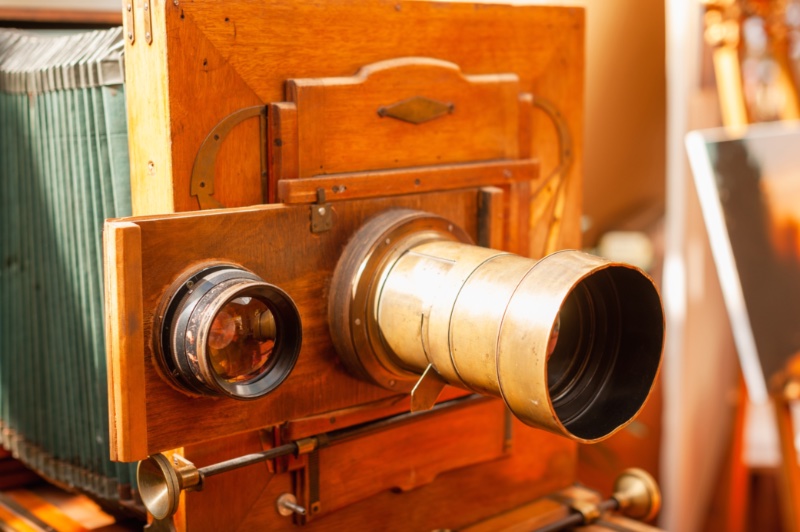
Since its humble beginnings in the early 19th century, photography has come a long way. It has become an essential part of our daily lives, from capturing family memories in color to producing stunning landscapes in high resolution. Thanks to digital technology, photography has undergone a seismic shift that has revolutionized the way we take and consume photographs.
The fusion of cutting-edge hardware and software has given us unparalleled control over the images we capture. The ability to share them instantly with a global audience has transformed how we communicate visually.
The Evolution of Photography

The history of photography is an intriguing journey through technological innovation and human creativity. From the first permanent photograph captured by Joseph Nicéphore Niépce in 1826 to the ubiquitous digital images of today, the medium has undergone a remarkable evolution.
Over the years, photographers and engineers have developed new techniques and equipment to enhance the camera’s capabilities and improve image quality. With the introduction of color photography, Polaroid instant cameras, and the rise of digital photography, the possibilities for capturing and sharing images have expanded exponentially.
Today, photography has become an integral part of how we document our lives and share our experiences with others. With the capacity to take high-quality photos and videos on our smartphones, we can capture memories and moments on the go, share them instantly, and preserve them for posterity.

Additionally, advances in storage and cloud-based services have made it easier than ever to store and organize extensive collections of images. Beyond personal use, photography has transformed many industries, including journalism, advertising, and entertainment.
The ability to capture images quickly and efficiently has allowed new storytelling and visual communication forms. With drones and other specialized equipment, photographers can capture stunning aerial shots or get up close and personal with their subjects in previously impossible ways.
Photography has evolved remarkably from its humble beginnings to its current ubiquity. Thanks to technological advancements, the camera has become more accessible, versatile, and powerful than ever, allowing us to capture, preserve, and display our memories in new and exciting ways.
The Digital Age of Photography

The rise of digital photography has revolutionized the way we capture and share images. With the advent of digital cameras and smartphones, anyone can take a high-quality photograph with just a few clicks. Digital photography offers several advantages over traditional film-based photography, including the ability to view and edit images instantly and the freedom to take as many shots as desired without worrying about running out of film.
However, there are also some downsides to the digital age of photography. With the expansion of social media and the internet, our images are often shared and consumed at lightning speed, leading to a need for more privacy and ownership over our work. Additionally, the constant barrage of shots can make it difficult for any photograph to truly stand out in a crowded field.
Despite these challenges, digital photography has fundamentally changed how we consume and share photographs. With the ease and accessibility of digital cameras and smartphones, we can take photos and share them with the world in an instant.

Social media platforms like Instagram and Facebook have allowed photographers to build audiences and showcase their work in new and exciting ways. The emergence of digital photography has also had a significant impact on the industry, from the democratization of photography to the rise of new professional opportunities.
As technology evolves, we can expect even more changes in how we capture, consume, and share our images. The digital age of photography has opened up new possibilities for creativity, accessibility, and communication. While there are challenges to navigate, the benefits of digital photography are undeniable, and we can only imagine what the future holds for this ever-evolving medium.
The Rise of 3D Photo Crystals

3D photo crystals are the latest technological innovation revolutionizing the art of photography. These crystals create a stunning illusion of a levitating, three-dimensional image within the crystal itself, providing an immersive viewing experience that breathes life into photographs like never before.
Many companies, including Artpix3D, use custom engraving services to make 3D photo crystals accessible to a broader audience. Creating a 3D photo crystal involves transforming a 2D image into a 3D model using specialized software.
Laser technology then etches this model into the crystal, creating a gravity-defying effect. The crystals are available in various shapes and sizes, ranging from 3D photo crystals: personalized gifts with engraved photo to intricate designs suitable for display as works of art.
The rise of 3D photo crystals is just one example of how technology transforms how we experience photographs. With 3D printing and virtual and augmented reality, we can create immersive and interactive experiences beyond the flat, two-dimensional plane. These innovations offer new and exciting ways to explore our photographs, forging a deeper connection with the memories they represent.
But the impact of 3D photo crystals on the art of photography extends far beyond personal use. Artists and designers are exploring the medium and discovering new ways to use crystals to create visually stunning works that push the boundaries of traditional photography. 3D photo crystals offer a new canvas for creative expression, from abstract sculptures to lifelike portraits.
As technology becomes more accessible, the potential of 3D photo crystals to create a new form of visual art is thrilling. With its unique ability to merge the physical and digital, 3D photo crystals represent a new frontier in photography. We can expect even more innovative uses of the medium in the future as the art of photography continues to evolve and transform.
Final Words

Photography has evolved significantly since its inception in the early 19th century. With the rise of digital technology, photography has become more accessible, versatile, and powerful. The impact of technology on photography has been profound, providing us with greater control over the images we create and the ability to share them instantaneously with a global audience.
Today, photography has become an integral part of our daily lives, whether we’re taking snapshots on our smartphones or admiring the work of professional photographers in galleries or online. With the power to take high-quality images and videos on our smartphones, we can capture memories and moments on the go, share them instantly, and preserve them for posterity.
Additionally, advances in storage and cloud-based services have made it easier than ever to store and organize extensive collections of images. Beyond personal use, photography has transformed many industries, including journalism, advertising, and entertainment.
The ability to capture images quickly and efficiently has allowed new storytelling and visual communication forms. With drones and other specialized equipment, photographers can capture stunning aerial shots or get up close and personal with their subjects in previously impossible ways.
As technology evolves, we can expect even more changes in how we capture, consume, and share our images. The impact of technology on the art of photography is significant and far-reaching, and it’s exciting to consider what the future holds for this ever-evolving medium.




